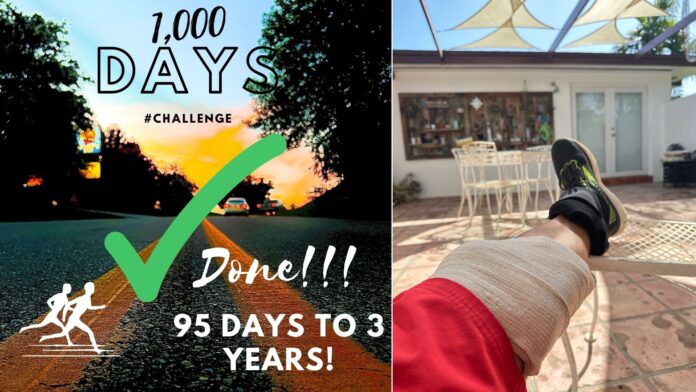UPDATE: This article was first published when I completed 2 years of running every day on August, 1, 2022. Now I am going for 3 years!- @javiermota

I said it before and I will say it again. I still don’t consider myself a true runner. I just run every day. There’s a big difference.
A lot of people have told me that anyone who runs everyday for 1,000 days IS a runner, but I cook everyday too, and I am not a chef; I play the guitar almost everyday and, most definitely, I am not a guitar player. You get the idea.
I don’t warm up, I don’t stretch, I am not training for anything, I don’t like to participate in organized races – I have only done 2 official 5Ks in my life -, I have not improved my times or distance in the past 2 years and 7.4 months. In fact, I ran much slower and shorter distances during the last 50 of these 1,000 days. More on that later.
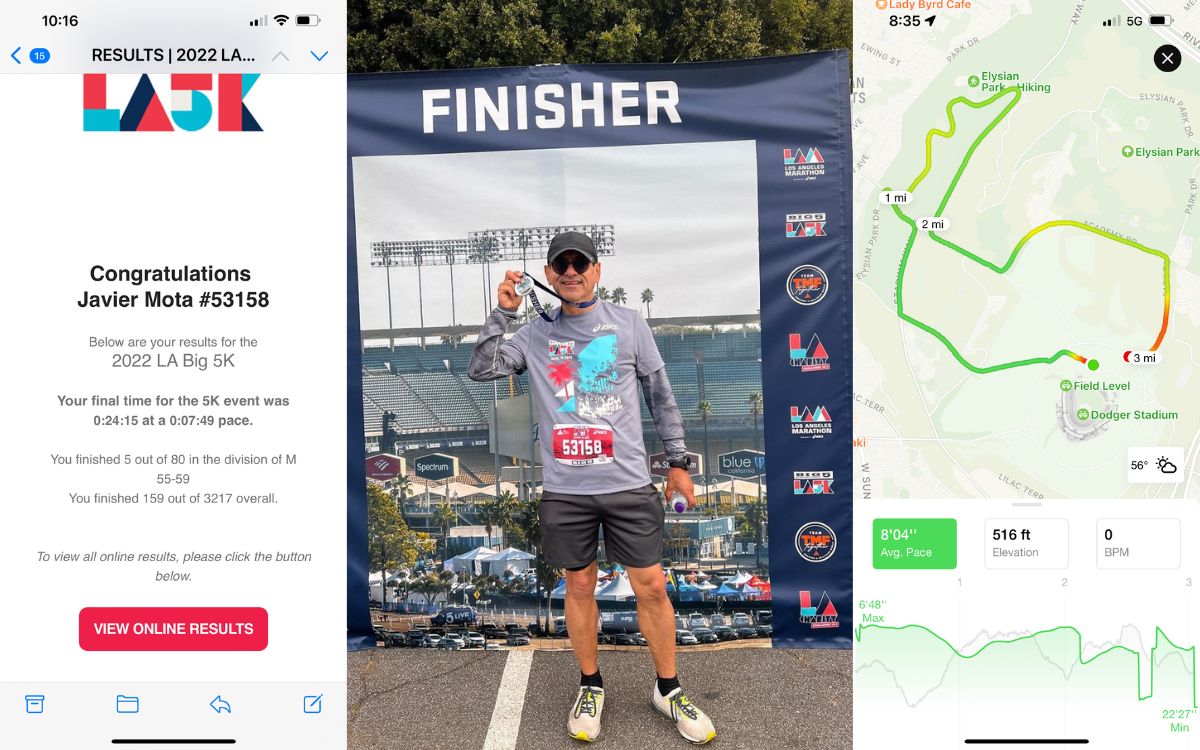
I would even say that I don’t like running. I think it’s boring, but I really appreciate what happens when you run … every day, for 1,000 days. You feel better in every aspect, you sleep better, work better and can eat and drink more. And you feel great after every run, physically and mentally.
For me, the best part is this running streak is the logistical challenge of it; planning ahead of every run and new goal, rather than the actual runs or the goal to become a “true” runner.
Soccer on the other hand (or foot), I loved, but I was not a real soccer player either.
I played since I could walk, but I never got good at it. That’s why I played at every position possible, not because of my skills, but just to get a chance to get in the game. Nine fractured bones, 3 knee surgeries – 2 meniscus and 1 meniscus plus torn ACL, a severely dislocated shoulder and countless other minor injuries later, I stopped playing at an organized level at the end of 2012.
That’s when I dislocated the left shoulder at one of my last soccer games. I was playing in a 30-and-under-league at age 50 – or, as someone told me then, being stupid -, and I was also training to run the Miami Half Marathon, in January, 2013.
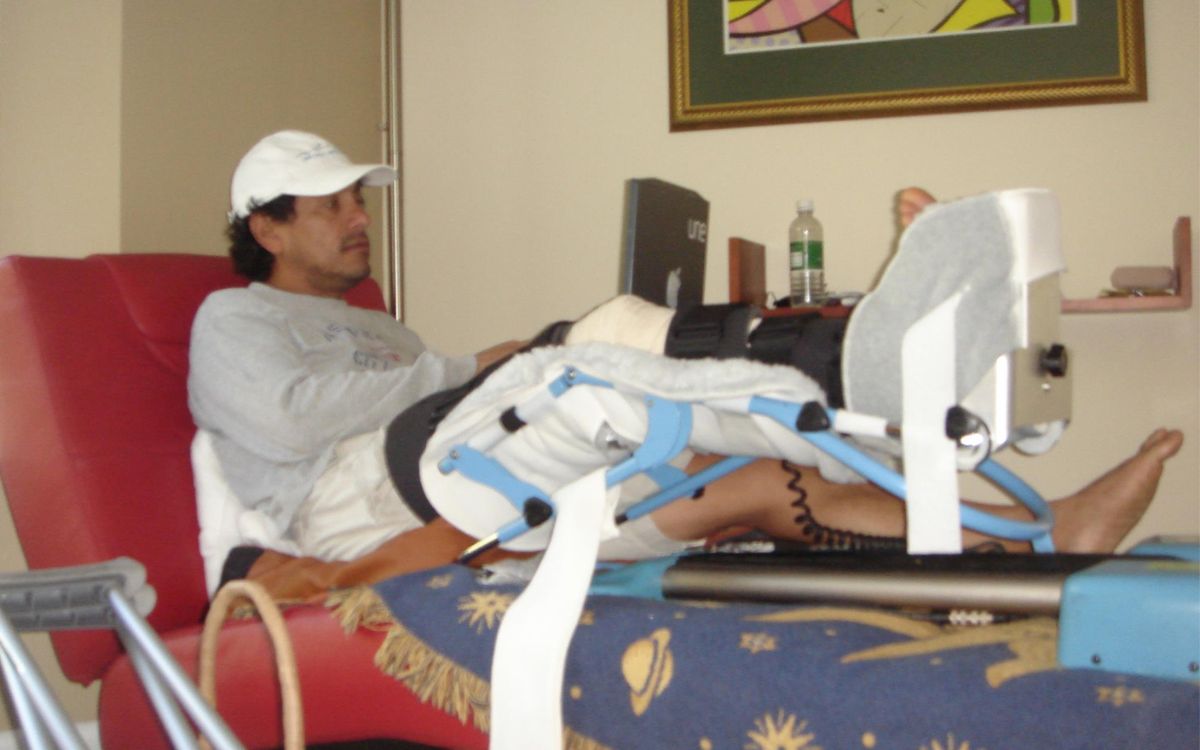
On Sunday, November, 25th, 2012 I ran 10.18 miles in 1 hour, 49 minutes, and 58 seconds (10:48 minutes per mile pace), with no issues. The 13.1 miles for the half marathon seemed doable, but after the shoulder dislocation the next week, I stopped everything. No running, no soccer, no exercise at all for a little more than a year.
Then, on Sunday, December, 22, 2013, I woke up and decided to go for a run: 6.01 miles at 8:55 minutes per mile pace. Again, no warm up, no stretching, no training. I just woke up and went.
I didn´t run again until Thursday, July 10, 2014 (3.34 miles at 10:46 minutes a mile pace) and then, took a 3 year break! On Tuesday, September, 16h, 2017, I did 2.09 miles at 11:07 miles per minute.
Since then, I started to be more consistent with at least 1 run a week and an occasional informal soccer game. I never learned my lessons!
Then 2020 happened.
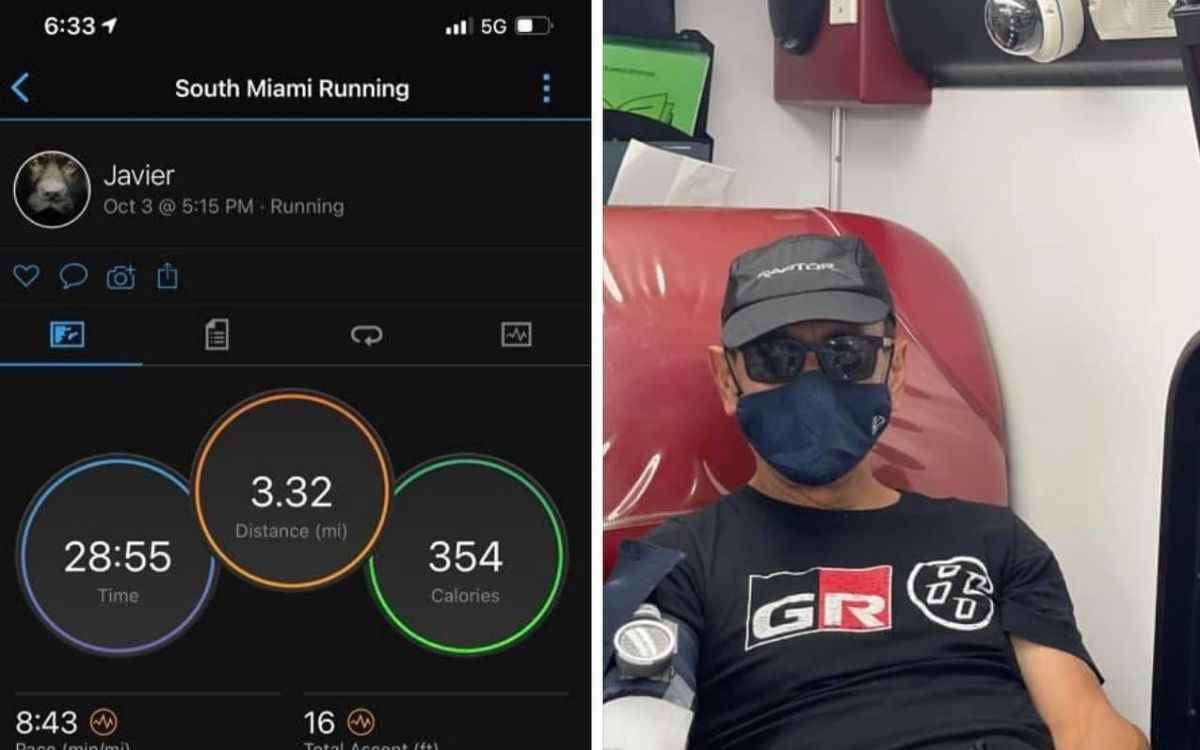
The start line for the streak
Because of my job as an automotive journalist, I travel pretty much every week – I was on the road for 320 days in 2019 -, so when we were locked down because of COVID, I started to run more often at home. I did 18 runs in June, 2020 for a total of 77.83 miles.
That’s when I was invited to join the private Facebook Automotive Industry Ragnar Relay Interest Group for a 500-mile challenge in 2 weeks, around the 4th of July weekend. It sounds like a lot, but it wasn´t: 12 runners, 14 days, 3 miles a day each. We did it!
And then what? After a couple of days off, I added an individual challenge to keep running the rest of July, which I did (127.7 miles), and then I challenged myself to do 100 miles in August … under the Miami summer heat! I survived with a total of 110.9 miles, for the official start of the current streak.
The next challenge became 100 days in a row, which I achieved in October, 2020 and then, to finish the year with consecutive runs every day. After that I have not found a reason to stop.
The work trips slowly restarted in 2021 and with that, the real challenge has been finding the time and conditions to keep running every day.
I have run in 15 countries and over 100 cities, starting as early as 4:30 AM and as late as 11:45 PM; at 30F degrees under the snow in Ankara, Turkey, and at 120F in Austin, Texas.
I once jumped out of the car at 11 PM on my way home from the airport to run the last 3 miles, just to keep the streak going. I´ve also run inside airports when I did not have time before or after flights.
The longest run – almost 9 miles- was in Munich, Germany, in September, 2021, just because I got lost and ran the last 5 miles in record time, afraid that I was going to miss the start of my work assignment. The fastest: a 10K at 7:58 minute per-mile pace at home. It was a surprise even for me.
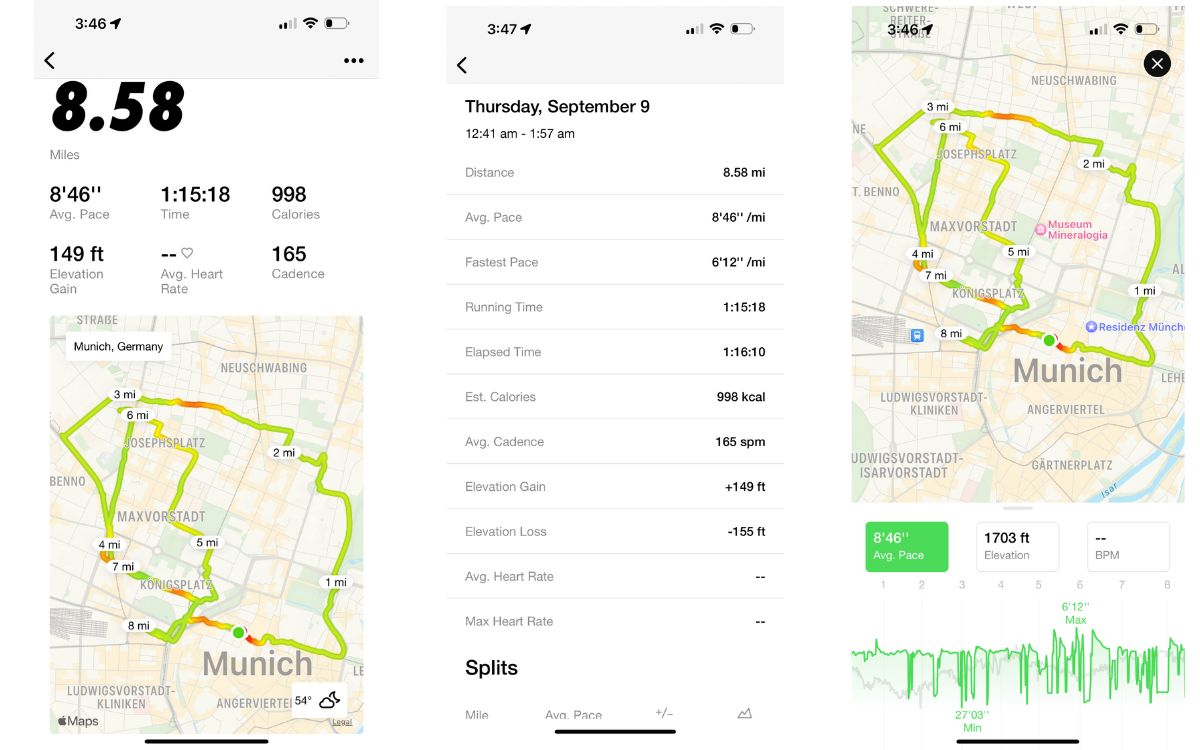
On December, 31st., 2022 I went out at 11:30 PM to complete the daily 5k and then did another one staring right at Midnight and finishing on January 1st. 2023 to begin the New Year. That’s 2 days, right?
I´ve been invited to run a marathon, but now I wouldn’t even consider a half. I think that running long distances creates a higher risk of getting injured. I´ve heard from people who say they regret not stopping running after a certain age (around 50), because of all of the injuries and long lasting effects on the knees and hips. Yes, all of them used to run marathons and are overweight.
Other minor details about the streak; I have broken the screen of 2 iPhones, which I dropped while hitting STOP on the run app at the end of a couple of races (I have also found and returned one).
I have lost 3 pairs of sunglasses and in the few last months, I have «entertained» myself by picking up garbage on the route. Sometimes at an amazing rate of 10 or more pieces of garbage per mile.
It is sad to realize that most of the empty water bottles, beer cans, and bags of fast food leftovers are obviously thrown onto the streets from moving cars.
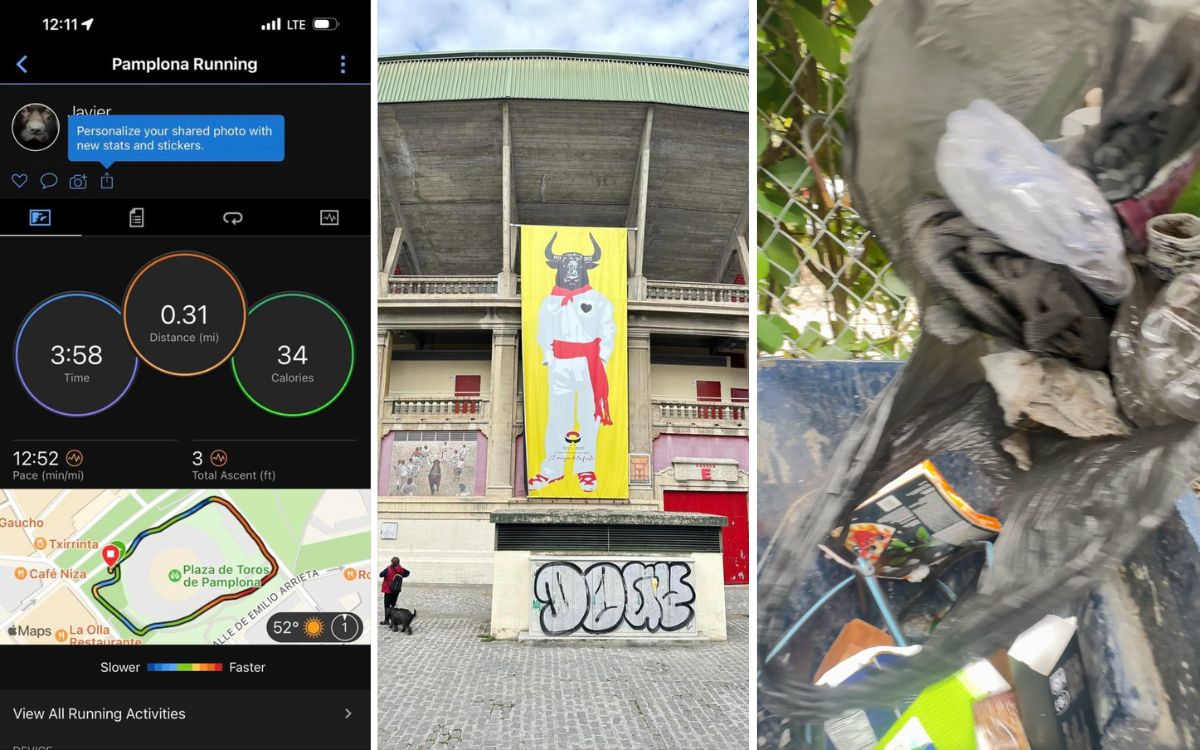
The runners knee “issue”
The most frequently asked question when people find out about the streak is: “How come you don’t get injured?
I´ve been told by a running coach that I have an “almost perfect” running style and physical shape to avoid injuries: I am 5´8” tall and keep my weight between 155 and 160 lbs. As for the actual running; short steps, medium pace (8:30 to 9 minutes a mile) and massive calves; I guess soccer gave me something good after all.
But nobody is unbreakable and on day 957 (March, 15th, 2023), after a run on the hills of Sonoma County, I woke up with such sharp pain on left knee (the “good” one, since all my injuries and surgeries from soccer were on the right one), that I thought I would not be able to run that day.
Besides the logic of wear and tear after 957 consecutive days of running, I had no other explanation for this “issue” – I refuse to call it “an injury”.
I didn’t twist or hit anything. I didn’t go faster or longer. The stiffness, pain and eventual swelling, started for no apparent reason.

Fortunately, the pain started to subside during the day with ice and heat treatment. I bought an elastic brace and went out by 4 PM for another 5K. Slowest pace of the streak (13:16 minutes a mile), but I made it. The interesting thing is that at the end of the run, I was feeling no pain.
I slowed down and shortened the distance the next couple of weeks and ran on a soft flat track at the park half a block away from home. By day 965, some of the pain was still there, but again, it would go away at the end of each run.
Then I had a couple of quite challenging couple of weeks, because of travel from Miami, to Barcelona, San Sebastian, Bilbao, London, Phoenix, San Francisco, back to Miami and New York, but I was able to keep the streak going, mixing a couple of runs on hotel treadmills and on the longest travel day – 4 airports in 3 countries – I ran 7.5 miles, combined inside the airports hauling my carry-on suitcase and backpack. Yes, I know, I am more stubborn than smart.
On day 975, I was 95% back to “normal”, which kept me on track, following the medical advice I received when I reached the 2-year mark of not forcing the issue if the symptoms persist for more than a week to 10 days, and applying 75% of the RICE (Rest, Ice, Compress and Elevate) rehab formula.
The “issue” is not paralyzing. I can still run at a good pace, even with a bit of discomfort and I´ve been icing the knee after every run, which helps a lot. I did my second official 5k – the Lexus Miami Corporate Run on Thursday, April, 27th. At 8:18 minutes a mile.
Talking to my fellow runners, I was unscientifically diagnosed with Iliotibial Band (IT Band) Syndrome.
According to the Hospital for Special Surgery, its a common condition in competitive athletes and other active people, such as runners, cyclists, competitive rowers, skiers, and soccer, basketball, and field hockey players.
The IT band is a long, fibrous band of flexible fascia that extends from the hip to just below the outside of the knee. It also has an attachment to the outside of your knee cap.
The cause of IT band syndrome is controversial. It is commonly thought to be caused by the friction of repeatedly bending and straightening the knee that leads to inflammation of the area under the IT band.
Other studies suggest it is actually the result of compressive forces to a fat pad that is deep to the IT band. Another theory suggests chronic inflammation of the IT band bursa.
There are various individual factors and training practices that may place excessive stress on the IT band and put athletes at risk.
So, as long as this “issue” doesn’t get worse, I will keep the streak going until at least August, 1, 2023 for the 3-year mark. Just in case, I am going to get the knee check by a doctor.
I run until … I won´t
Even with the knee issue, there´s never been a day that I didn’t feel like running, despite lack of sleep, occasional hangovers and often some kind of other pain: from the left shoulder, which has not been fully repaired from the dislocation now more than 10 years ago, to lower back spasms and slow 3-day recovery after a soccer game on February 2022; regular field, 90 minutes, and a total of 6 miles of running during the game, after 2 running to get to the field.

I haven’t had a full medical check-up during the streak, but I donated blood twice, got the COVID-19 vaccine and boosters and, as far as I know, I have not gotten infected, despite getting back to travel every week. I have had a couple of days with mild flu-like symptoms, but nothing that would prevent me from running.
I’ve also been told that I should wear proper running shoes – I am flat footed -, but until late May, 2022, when I got a pair of New Balance Fresh Foam 1080 shoes, I ran with all brands and styles and didn’t feel any difference.
And then, there’s the issue about how long I should keep running on old shoes. For me, it’s until I see enough holes either in the top or bottom. I don’t know any better, I am not a runner. I just run every day.
Next challenge: 95 more days and keep my Vo2MAX at “superior level” (52) and my “Fitness age at 20” – I turned 60 on December, 26, 2022 -, per my Garmin Fenix 5 Plus.
The new Apple Watch Ultra that I’ve been testing for the past few weeks doesn’t give me that reading, but it does have a number of more useful and perhaps more realistic apps.
After that, I am sure I will find a new challenge, a new streak, because, when I think about it, I´ve been doing that all my life.
I starting my first job as a journalist on Thursday, January 13, 1983 and I´ve never missed a day of work since; I covered the 162 games of the inaugural season of the then Florida Marlins in 1993 and then 5 full seasons until they won their first World Series in 1997 then; I´ve never been back to a whole baseball game since. That´s a much longer streak.
Some people might conclude that I am more stubborn than determined or good at anything at all. They might be right.
So, for now, I will just keep running everyday, until, one day, I won´t. Maybe after August, 1st. 2023 … 3 years!

Now, listen to the real experts
Since I think I am going to keep going for the near future, I got the opinion of a couple of people who really know about running and health care to learn about some of the issues mentioned.
Adolfo Salgueiro: Certified Running Coach (RRCA), Level II

If you run, you are a runner. You may not be a competitive runner or run more than one day at a time, but those are other issues.
Like former Editor for Runner’s World Magazine, Bart Yasso, said, “I’ve never met a fake runner”. I think you are mistaking all the activities you are mentioning as being good/great at it. We can’t all be Eliud Kipchoges at running, or Todd English at cooking, or Brian Mays at playing guitar. Those are the exceptions, not the rule. You shouldn’t compare yourself with the very best. If you do, you will live a frustrated life.
Shoes are more important than you give them credit for. Once the outer sole wears off in any part of the shoe, it is time to change it. They usually last from 300-350 miles. The best way to figure out what shoe is good for you is to go to a running store, where a runner will be fitting you, not a teenager in a box store trying to get a commission at any cost.
A watch cannot measure VO2Max. This is not measured by an equation. VO2MAX is the amount of oxygen your body can consume at maximum effort. It gets measured by a machine that quantifies the O2 that goes in and the O2 that comes out. The difference is the O2 you consume. Unless your watch is connected to that machine, it can’t measure oxygen consumption. Also, VO2Max is good to know but it is not the parameter that will measure everything. If you don’t understand it, it will not be of any assistance. If you are not training for or performance, it shouldn’t even matter.
How risky is it to run everyday?
There is a universal answer to this question: It depends.
Running every day is not necessarily risky per se, but it is not for everybody either. A running streak could be a nice challenge for certain runners and could be a road to injury for others. The key is to make sure you are recovered properly in between runs and adjusting each run to the state of your body so you don’t overtax it.
There are many confirmed 20+ year streaks. It is said the longest one was over 50 years, but I am not sure how that can be confirmed beyond the honor system considering there was no technology at that time to verify it.
There are clubs for streakers. You can check this website.
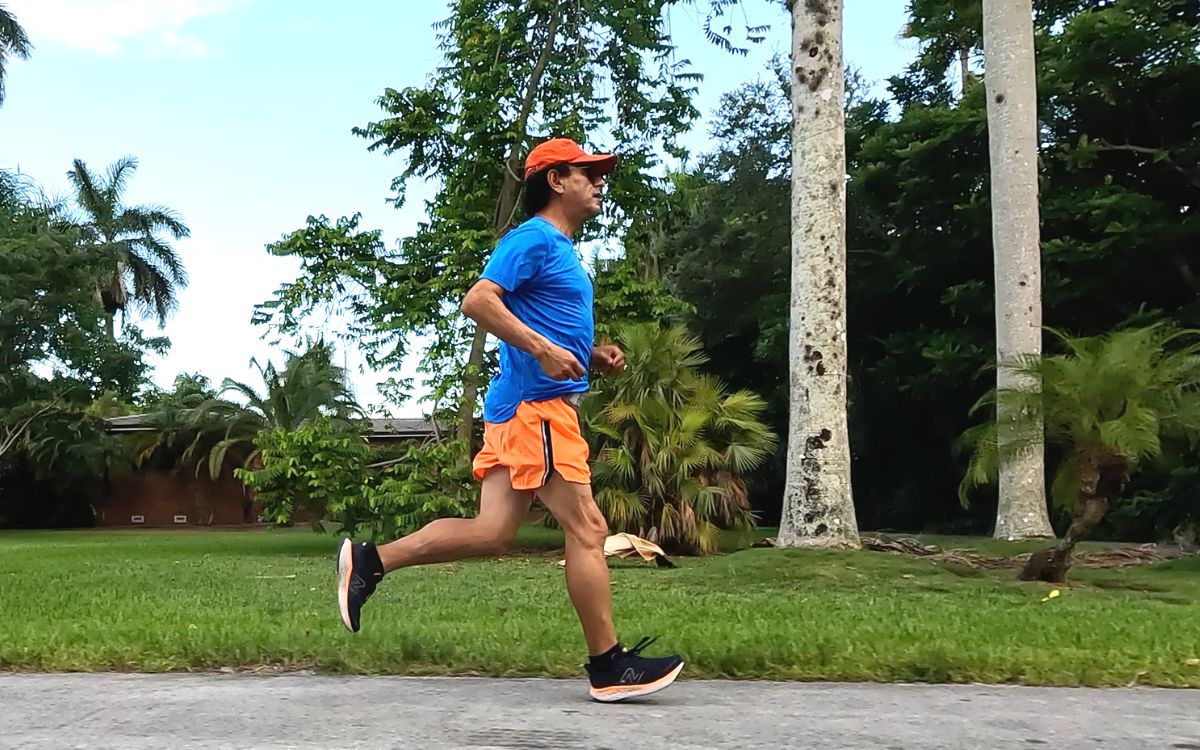
Do you recommend it?
The key is not to become a prisoner of the streak. When you go beyond your limits only because you don’t want to break the streak, you are edging towards an injury. Most running injuries are because of overuse and repetitive movement so, if you don’t allow your body to recover because you must run regardless, you are asking for trouble.
Personally, I’ve never been inclined to try a streak, but that only means it is not attractive to me, not that it shouldn’t be done. If a streak is for you, be smart about it, keep it going as long as it doesn’t become a chore and, most important: don’t be afraid to break it and start a new one if it is necessary. Nobody is going to love you any less because you didn’t run one day.
How important is resting-recovery? How long in between runs?
It depends. Not everybody recovers at the same rate. Being ready to run tomorrow after an easy 3-miler on a cool spring morning is very different from doing so if you pushed for 20 miles under the sun. Also, age, weather, nutrition, health, sleep and fitness, among others, are factors that will determine whether you are ready to go again tomorrow or not.
Recovery doesn’t necessarily mean to take a day or two or a week off. It is an individual parameter that every runner needs to find out what works for them. The main thing to understand is that training consists of two equally important elements: Work and recovery.
Does distance running create more risk for injuries?
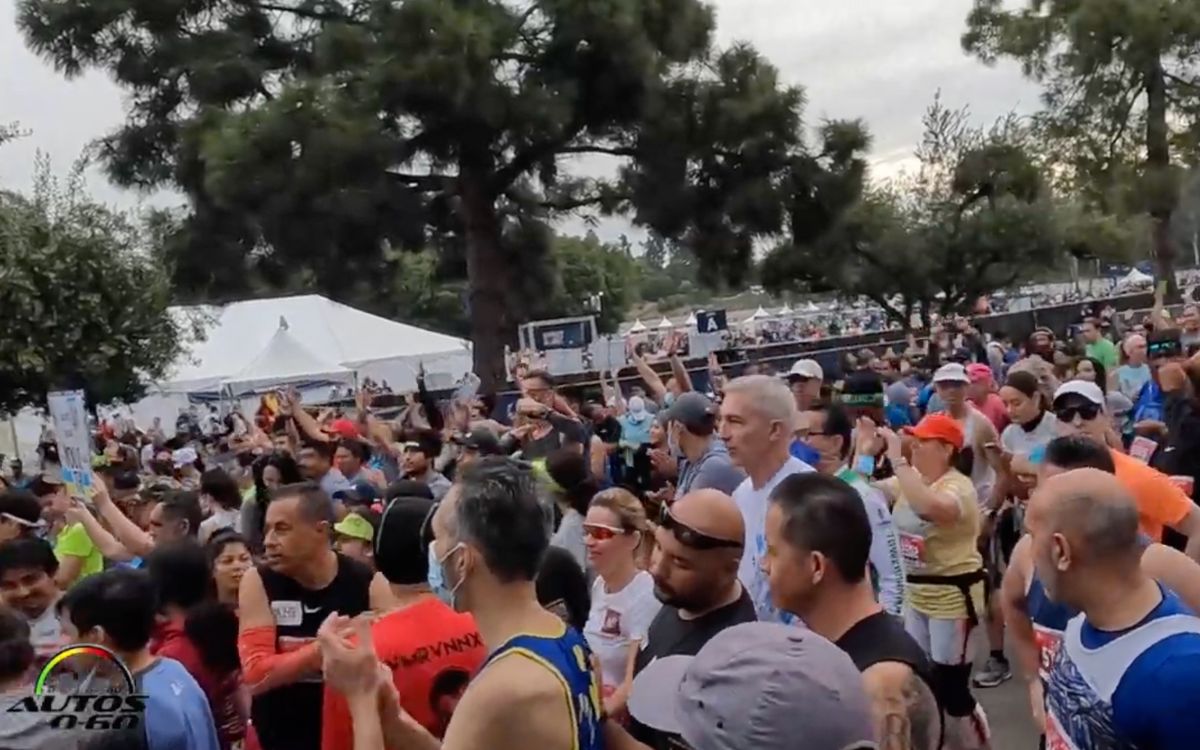
Just by moving around we are subject to injuries. I have read stats that 50% of runners get injured every year and that 90% will get injured during their lifetime. I don’t have the source of these at hand right now, but regardless of how accurate they are, they show you that you must prepare your body for the task at hand.
Cross training, dynamic stretching, weightlifting, cycling and/or yoga, are just a few of the activities that will help you counterbalance the effects of running in your body. To become a lifetime runner, I believe you should do something other than just running.
Unless you have an underlying health issue or a structural problem in your body, most people can finish a 5K or a 10K race if they commit to it. Beyond that, there are millions of people who run half marathons, marathons and ultra-marathons. So, it is a matter of preparing your body for what you want to accomplish and being smart about figuring out what your limits are.
Running a marathon without training is possible, sure, but you will go through hell and, if you are lucky not to get injured, it will take you a while to recover. This only means you can run a marathon without training, not that you are fit to run a marathon. Same applies to every distance. You must prepare your body for what it is about to undertake.
If you do so and you recover properly so you can do it again, you could keep running until the day you die.

Scott Lang MD, Professor of Family Medicine – UCF College of Medicine
The Human body is a perfectly designed system for the following three activities: locomotion, food acquisition, and sex.
Sedentarism is by far more dangerous from an overall health perspective than is running everyday. The truth of the matter is most people are deconditioned prior to deciding that they want to be daily “runners”.
They then «flip the switch» and all of a sudden begin running on hard surfaces at the precise rate of TOO FAR-TOO FAST-TOO SOON.
This population of people is at risk for overuse injuries which is the risk I assume you are alluding to.
Preventing these overuse injuries there are a few principles which every athlete at any stage must follow.
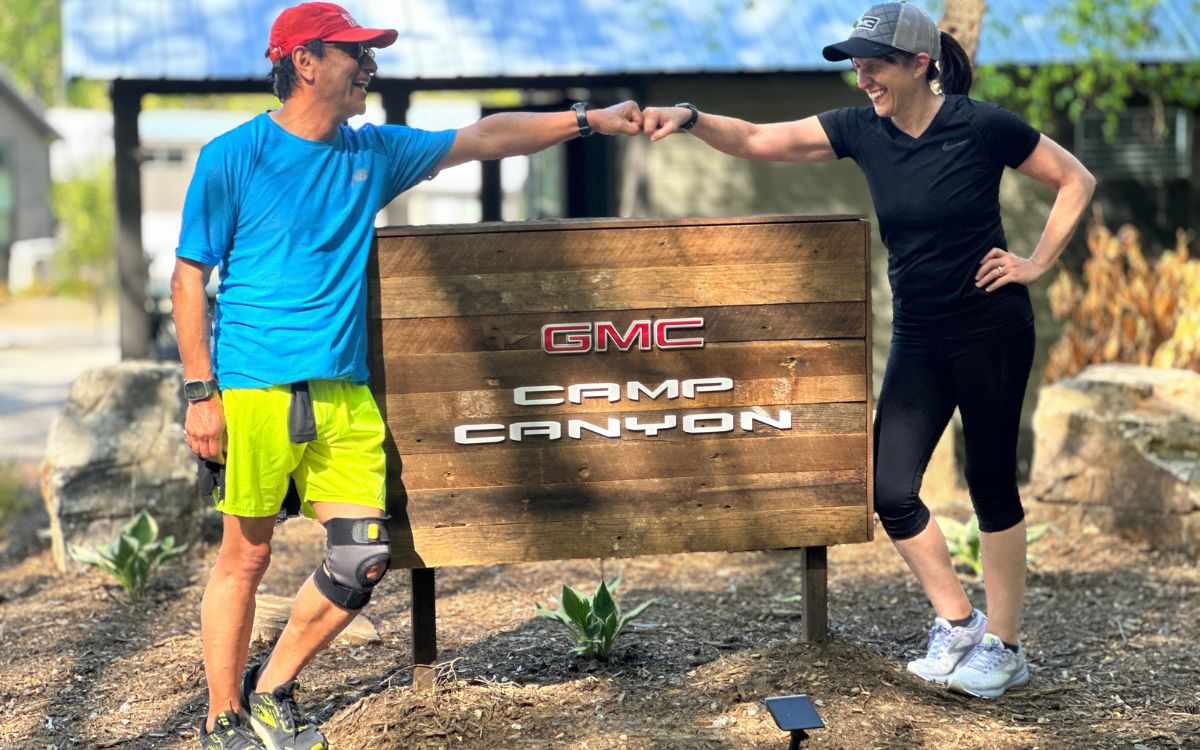
Number 1: Start low low, and go slow. Way slower and way lower than you think you need to.
Number 2: Do not increase your running mileage by more than 10% per week.
Number 3: Do not run more than 45 miles per week. There is no evidence that I see that running more than 45 miles per week improves performance or overall health, but there’s a great deal of evidence that running more than 45 miles per week puts you at risk for an overuse injury.
Number 4: The best running surfaces are soft and flat.
Number 5: Do not «run through pain”. If you have muscle or joint pain when you run, ice and rest up. If the pain persists for more than a week, go see your doctor.
Number 6: Follow any perceivably «hard training days» with easy days. That doesn’t mean you have to sit on your couch and eat Haagen Daaz, but have a perceivably easy day, and try not to have two “hard» training days doing the same activity two days in a row.
Number 7: Get new shoes every 500 miles. These rules are not perfect, but they work for the majority of new athletes.
Smart watches are perfectly accurate at calculating your heart rate
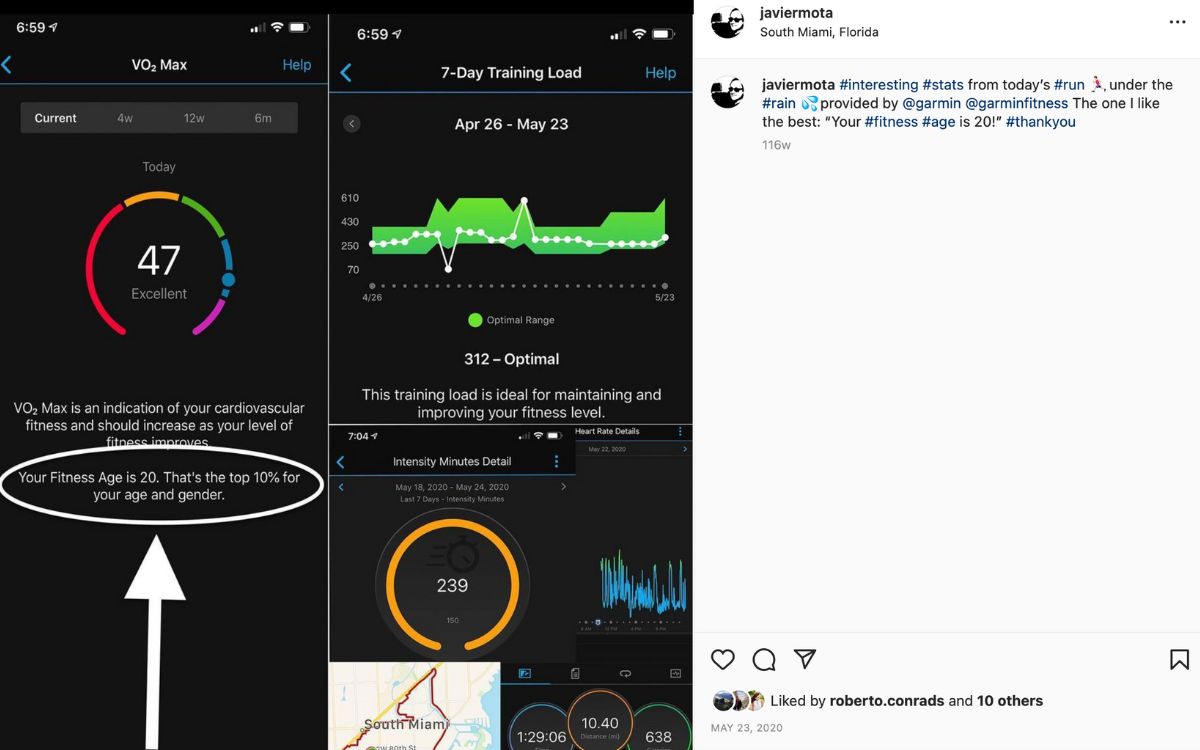
They can do so with precision and accuracy. Anything else that comes out of your smartwatch is a vague calculation based on a flawed formula and is ultimately inaccurate.
Without getting too deep into the details, in order to calculate a true VO2Max, you would have to be set up on a treadmill or a bike with a mask over your face and take someone through a vigorous exercise protocol calculating O2 consumption and co2 production during maximal exercise via the attached mask.
Your watch does not do that. I don’t have any idea how a “fitness age” is calculated, but it sure sounds like a marketing tool. Maybe you can enlighten me?
Moderate Exercise every day is an amazing and miraculous medicine

It helps prevent heart attacks and strokes by improving nearly every metabolic risk factor: lowering blood pressure, lowering cholesterol, decreasing the incidence that you’ll develop diabetes over your lifetime, developing healthy strong bones and muscles as you age, and serving as a perfectly effective medicine in both the treatment and prevention of anxiety and depression.
The risk of Exercise gets slightly more dangerous at the extreme end of the spectrum and when done compulsively, but that is a nuanced discussion for another time and purpose.
End story, for the overwhelming majority of humans alive today, exercise is a positively transformational medicine that should be practiced to optimize one’s healthspan and lifespan.


